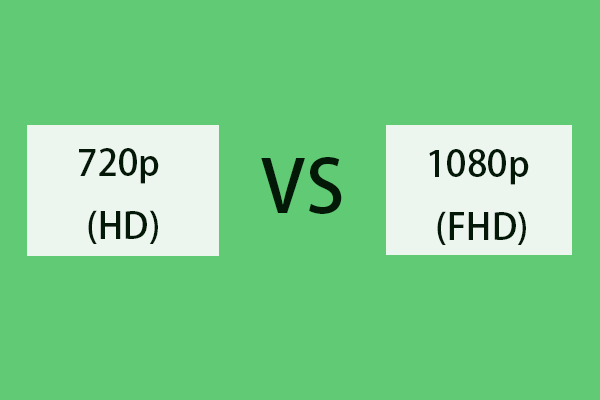
- #720P VS 1080P VIDEO SONGS 720P#
- #720P VS 1080P VIDEO SONGS INSTALL#
- #720P VS 1080P VIDEO SONGS DRIVER#
- #720P VS 1080P VIDEO SONGS TV#
- #720P VS 1080P VIDEO SONGS WINDOWS#
#720P VS 1080P VIDEO SONGS WINDOWS#
The most recent versions of Windows set the frame rate at 60 Hertz, or 60 cycles per second, and LED screens do not flicker. The frame rate is the speed with which the monitor displays each separate frame of data. The most common refresh rate was 60 times per second, which was acceptable for most people, but it could be pushed a bit higher to get rid of the flicker that some people perceived.Īs people moved away from the older CRT displays, the terminology changed from refresh rate to frame rate, because of the difference in the way the LED monitor works.

The most common way is to increase the number of times a complete screen is painted in a second, which is called the refresh rate. Manufacturers have tried to overcome this problem in various ways. Since the screen is being painted in alternate lines, flicker has always been a problem with interlaced scans. A progressive display paints all the odd lines first, then all the even lines. The monitor’s electronics "paint" each screen line by line, too quickly for the eye to see. The lines were fairly easy to see if you got up close to an older monitor or TV, but nowadays the pixels on the screen are so small that they are very hard to see even with magnification.
#720P VS 1080P VIDEO SONGS TV#
The monitor or TV screen has lines of pixels arranged horizontally across it. The interlaced scan is a holdover from television and from early CRT monitors. A "p" stands for progressive, and an "i" stands for interlaced. To begin with, the letters tell you how the picture is "painted" on the monitor.
#720P VS 1080P VIDEO SONGS 720P#
You may have seen the screen resolution described as something like 720p or 1080i. (I will talk about this in a future article.) Mind your P’s and I’s This doesn’t mean that what Windows chooses is always the best option, but it will work, and you can change it if you wish, after you see what it looks like. The more recent versions of Windows can detect the default screen resolution for your monitor and graphics card and adjust accordingly. It was ugly even on CGA screens, but that was the Windows default.Īs monitor quality improved, Windows began offering a few more built-in options, but the burden was still mostly on the graphics card manufacturers, especially if you wanted a really high resolution display. If you’ve watched Windows Setup or installed a newer version of a video driver, you may have seen the 640 x 480 low resolution screen for a moment or two.

#720P VS 1080P VIDEO SONGS DRIVER#
The resolutions built into Windows were very limited, so if you didn’t have the driver for your video card you’d be stuck with the lower-resolution screen that Windows provided. The choices available were determined by the capability of the video card, and they differed from manufacturer to manufacturer. Since the beginning, resolution has been described (accurately or not) by the number of pixels arranged horizontally and vertically on a monitor, for example 640 x 480 = 307200 pixels. Here, I’ll be using the term as it’s commonly understood, rather than the absolutely technologically correct usage. "Resolution" is technically the number of pixels per unit of area, rather than the total number of pixels. That says nothing about how densely the pixels are clustered. I am sure some of you already know that the term "resolution" isn’t correct when it’s used to refer to the number of pixels on a screen. Let’s look at what today’s terminology is, and what it means. However, this also means that there are a lot more options to choose from, with something to suit almost everyone’s preferences. With the advent of high definition video and the increased popularity of the 16:9 aspect ratio (I’ll explain more about aspect ratios in a bit) selecting a screen resolution is not the simple affair it once was. For the sake of nostalgia, here’s a look at a once well-known CGA display. Regardless of the capability of your monitor, you’d still have to choose from one of the few options available through your graphics card’s drivers. CGA was first, followed by EGA and VGA–color graphics adapter, enhanced graphics adapter, video graphics array. The color graphics technology was first developed by IBM. In this article I would like to take you through a bit of history and explain all the important concepts. Today we have lots of options when it comes to displays, their quality and the supported resolutions. As time went on, you could choose better video cards and better monitors as well.

#720P VS 1080P VIDEO SONGS INSTALL#
Windows came with a few preset options, and to get higher resolution or more colors (or both) you would install a driver for your video card. In days gone by, screen resolution (also called display resolution) wasn’t much of an issue.


 0 kommentar(er)
0 kommentar(er)
